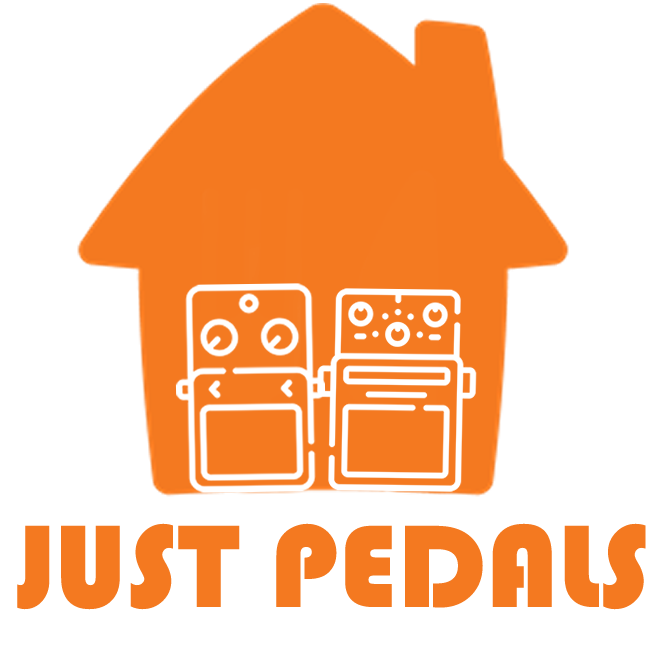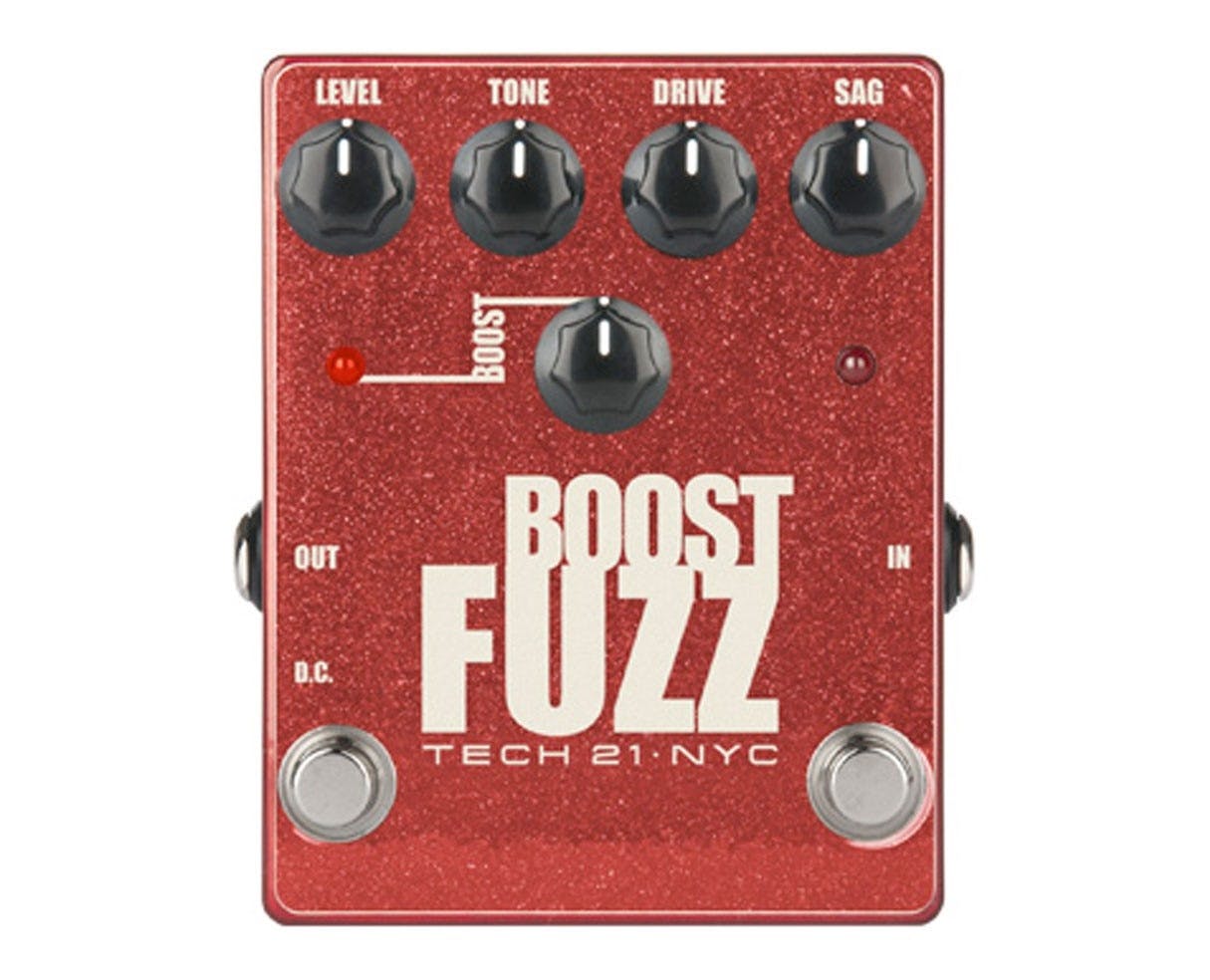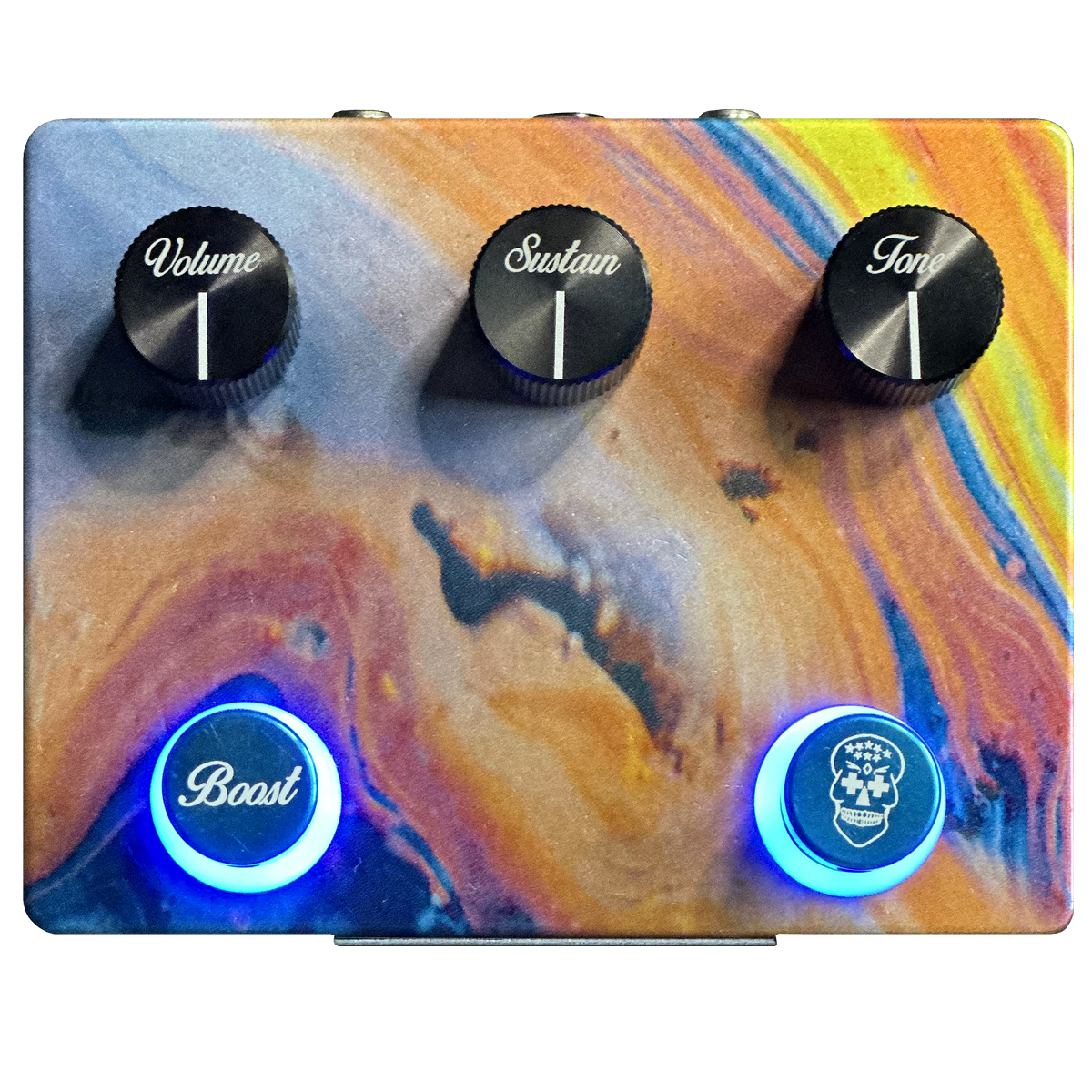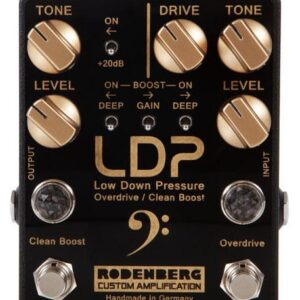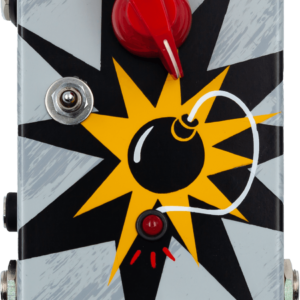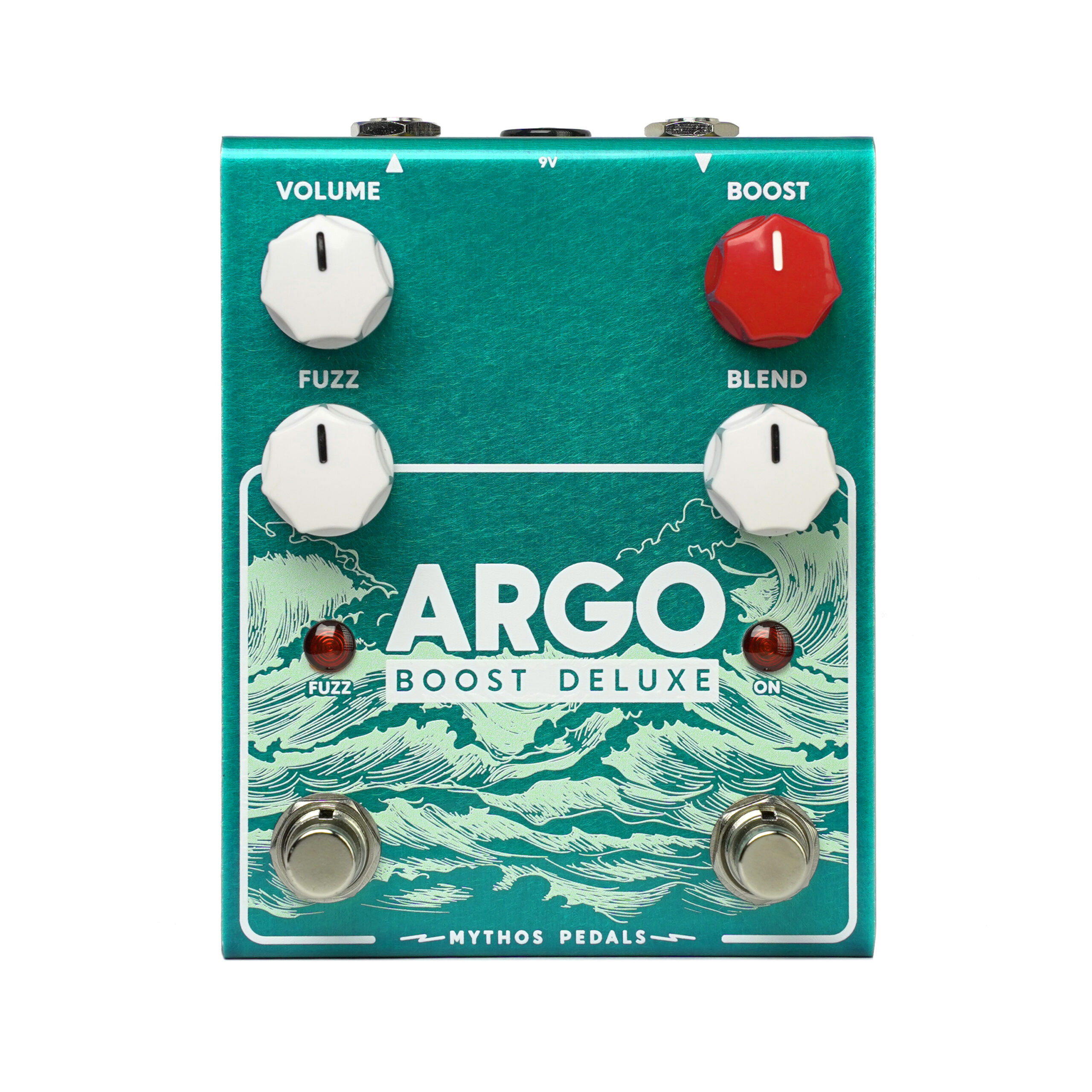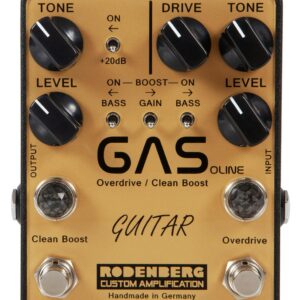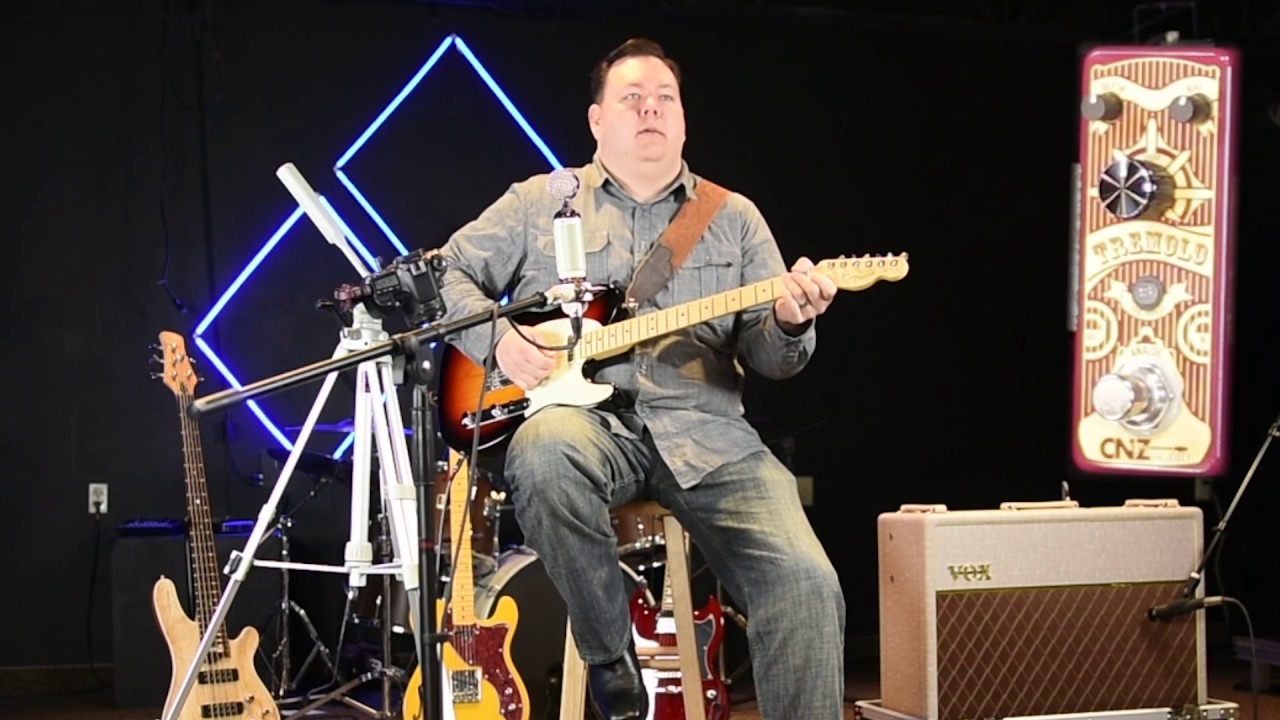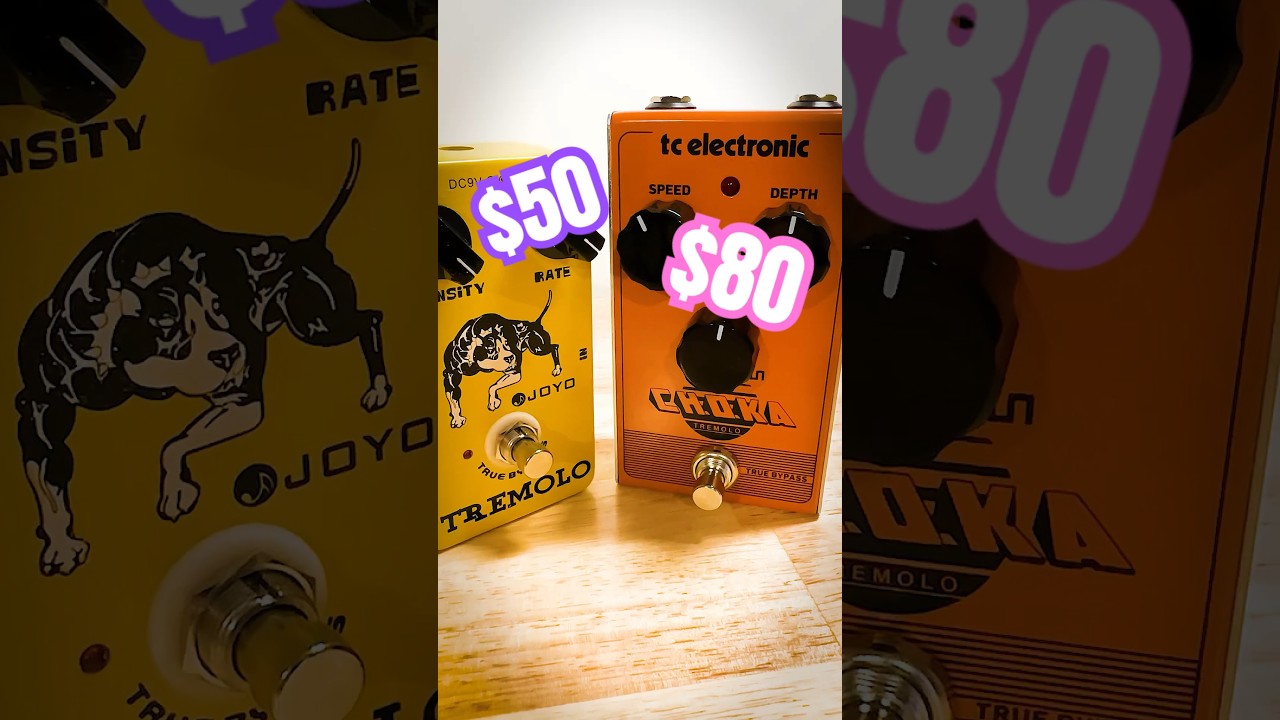Description
here at Just Pedals we love this Tech 21 Boost Fuzz Metallic – Analog Fuzz with Clean Boost.
The combination of a Fuzz and a boost is a simple idea but a good one. The Tech 21 Boost Fuzz allows you to quickly and easily push up the volume of your guitat while adding in that essential distortion … when you want to grab the crowds attention with a blazing solo this pedal might be just what you’re after.
Designed and built from the ground up utilizing the best individually-selected, hand-biased discreet components, each unit delivers optimized performance with studio-quiet operation. Alongside a wealth of hot driven tones, there is a powerful boost function that delivers up to an incredible 21dB of clean boost, which can be used independently from the effect.
It is a true post-boost, punching up the tone you dialed in, not smothering it in unwanted distortion. From the high-impedance input to the sweepable low-pass filter in the tone control, your tone will be open and controllable in every setting.
Here’s what Tech 21 have to say about this pedal
Vintage pedal hounds know that germanium fuzz sounds are way sweeter than silicon fuzz… like when the temperature is just right and doesn’t vary. The Boost Fuzz solves that problem by nailing that creamy germanium tone, constantly and consistently all day long. This SAG control allows notes to bloom and sing at your command, for dynamic, organic performances.
We have new and used Tech 21 musical equipment available on our website for fast direct delivery from sellers across the UK & Europe.
<h3 data-start="0" data-end="52"><strong data-start="4" data-end="50">Tech 21 – Analog Tone, Digital Versatility</strong></h3>
<p data-start="54" data-end="270">Tech 21 is an industry leader in analogue amp emulation, known for its legendary <strong data-start="135" data-end="146">SansAmp</strong> series. Since the late ‘80s, their pedals have provided musicians with rich, tube-like tones without the need for an amp.</p>
<p data-start="272" data-end="559">From the iconic <strong data-start="288" data-end="314">SansAmp Bass Driver DI</strong> to the versatile <strong data-start="332" data-end="343">Fly Rig</strong> series, Tech 21’s pedals deliver studio-quality sound with rugged, gig-ready reliability. Whether on stage or in the studio, their analogue circuitry ensures warm, responsive tones for guitarists and bassists alike.</p>
A boost pedal is used to increase the overall volume or gain of an instrument's signal, typically without adding distortion or altering the tone drastically. It’s commonly used to push the amp into overdrive, making solos stand out or increasing the power of the signal for a more pronounced sound. Boost pedals can also be used to emphasise specific frequencies, helping the instrument cut through the mix during performances.
There are different types of boost pedals, such as clean boost and colored boost. Clean boost preserves the natural tone of the instrument while increasing the volume, whereas colored boost can alter the sound slightly, adding warmth, presence, or a subtle tonal shift. Popular boost pedals include models from Xotic, Electro-Harmonix, and TC Electronic, each offering different features like EQ controls, low noise, and transparency, allowing players to tailor their boost to fit their unique playing style.
A clean pedal is designed to enhance or preserve the natural, unaltered sound of an instrument, typically by boosting the signal or providing transparent effects without introducing distortion or overdrive. Clean pedals are often used to provide a pure, clear tone, especially when musicians want to retain the character of their instrument while making subtle adjustments to volume, EQ, or tone.
Common examples of clean pedals include clean boost pedals, which increase the volume without colouring the tone, and EQ pedals, which allow for precise adjustments to the frequency response. Clean pedals are popular among players who want to shape their sound without altering its fundamental character, and they’re widely used in genres like jazz, country, and pop, where clarity and transparency are essential. Brands like Xotic, Electro-Harmonix, and MXR offer high-quality clean pedals suitable for a range of musical styles.
Fuzz is a type of guitar effect that distorts the signal in a more extreme and saturated way than typical overdrive or distortion pedals. It creates a thick, woolly tone with a characteristic "fuzzy" sound, often associated with the classic rock and psychedelic eras. Fuzz pedals work by clipping the waveform of the signal at a much higher level, resulting in a crunchy, sometimes harsh sound that has a distinctive bite and sustain.
Fuzz pedals can vary in intensity and tone, with some offering more subtle, warm fuzz and others creating a more aggressive, raspy sound. The controls typically include fuzz, tone, and volume, allowing players to shape the effect to suit their preferences. Classic fuzz pedals like the Electro-Harmonix Big Muff Pi and the Dallas Arbiter Fuzz Face have become iconic for their bold, powerful sound, making fuzz a staple for genres like rock, stoner metal, and experimental music.
Just Pedals is a new Guitar Effect Pedals Marketplace – We feature new and used Guitar Effect pedals from different sellers, to purchase online from the UK.
Just the latest videos
Just related products
Auto Amazon Links: No products found.
